Dagalisuiten, 2013
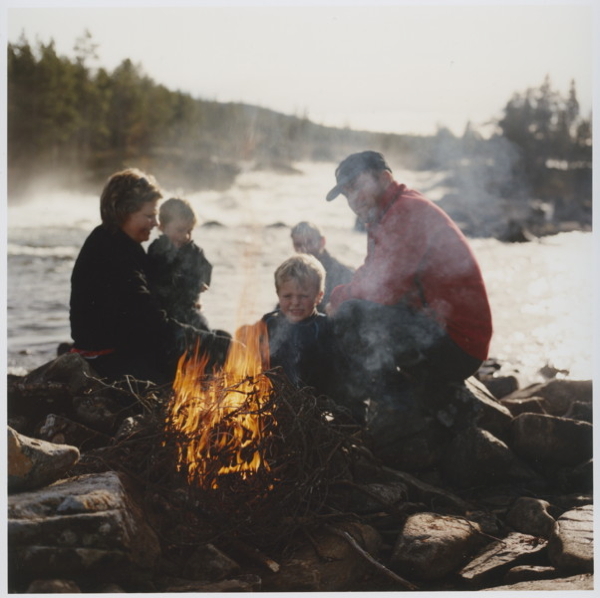
Godfarfossen, C-print, 2013
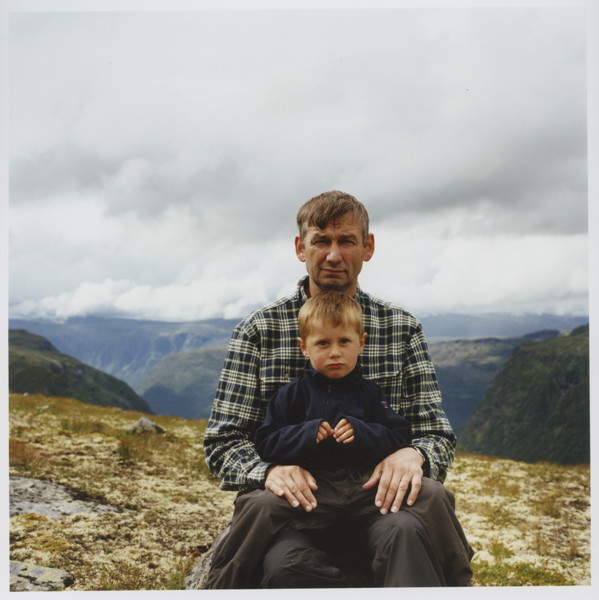
Jan og Clemens, Turtagrø, C-print, 2013
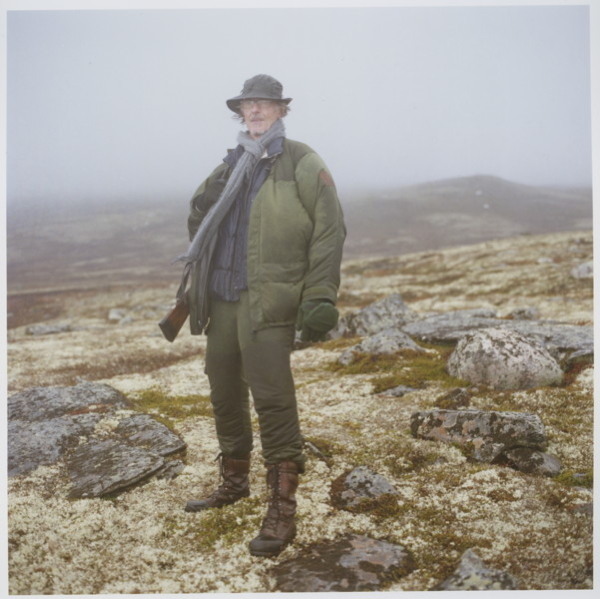
Claes i vind og regn, C-print, 2013
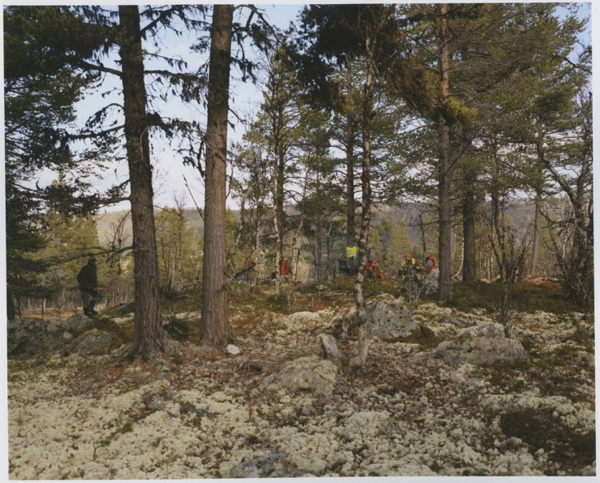
Jegere i landskap, C-print, 2013
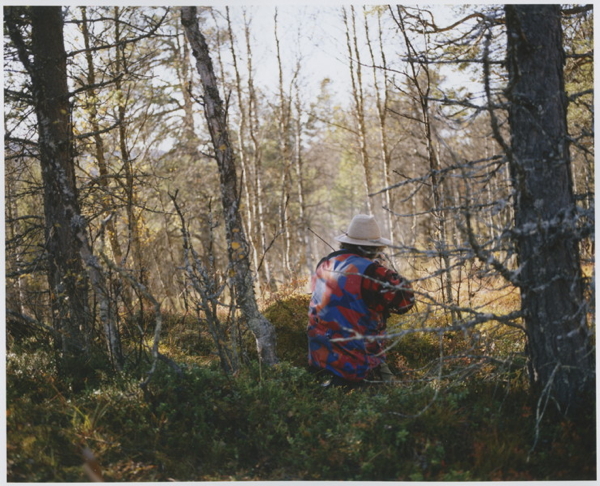
Skudd, C-print, 2013
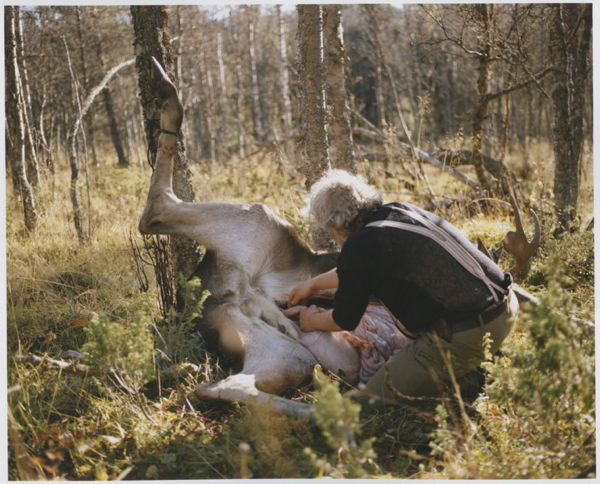
Slakt, C-print, 2013
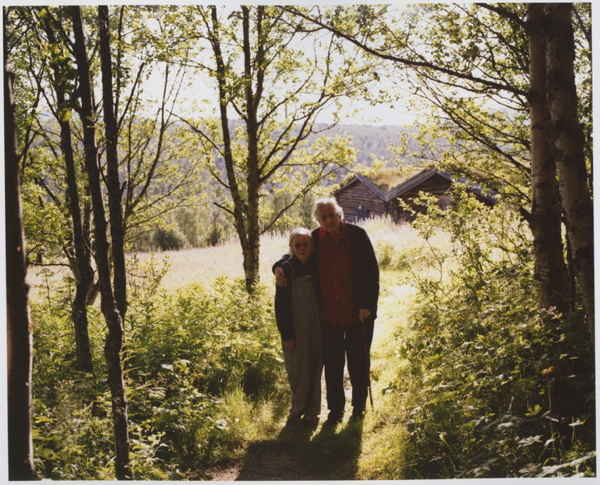
Heggeset- folket, C-print, 2013
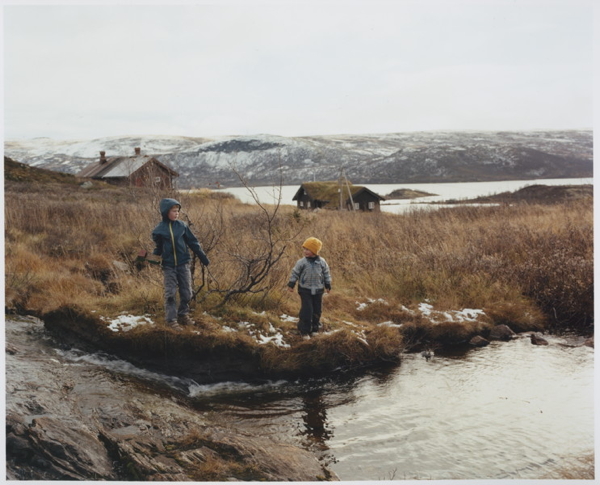
Syver og Jan , Ustaoset, C-print, 2013
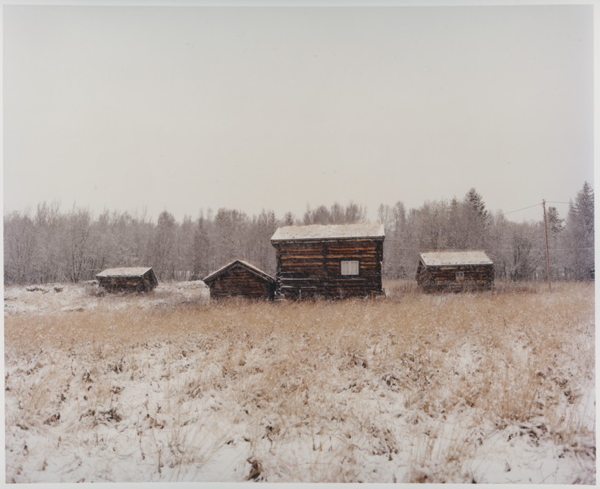
Nysnø, C-print, 2013
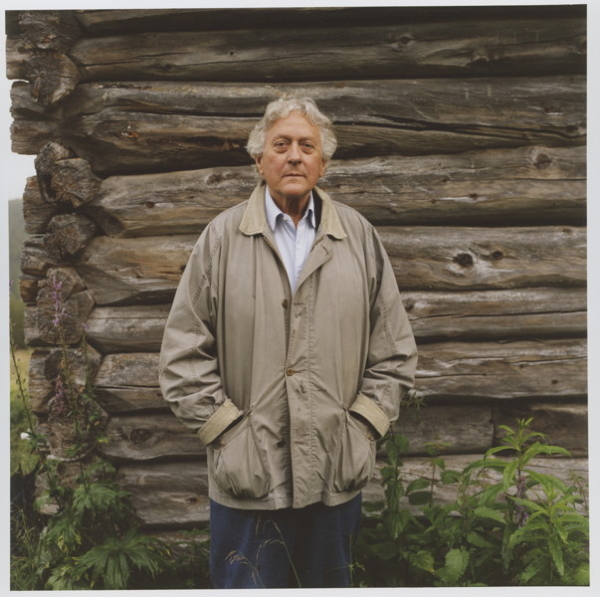
Store- Jan, C-print, 2013
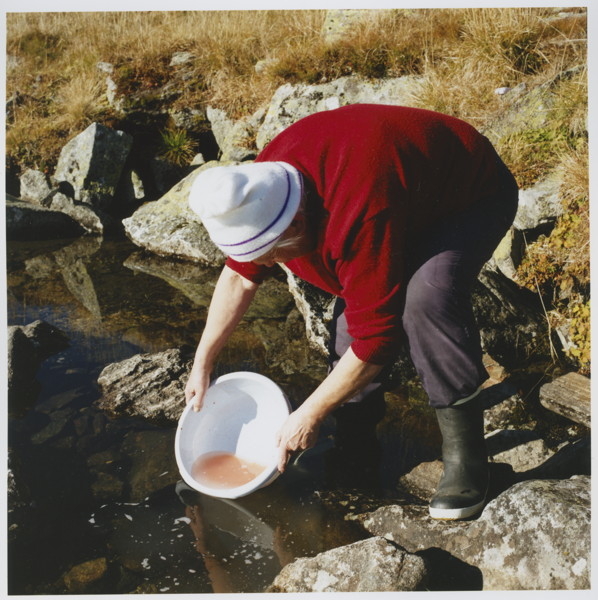
Helga vasker rogn, C-print, 2013
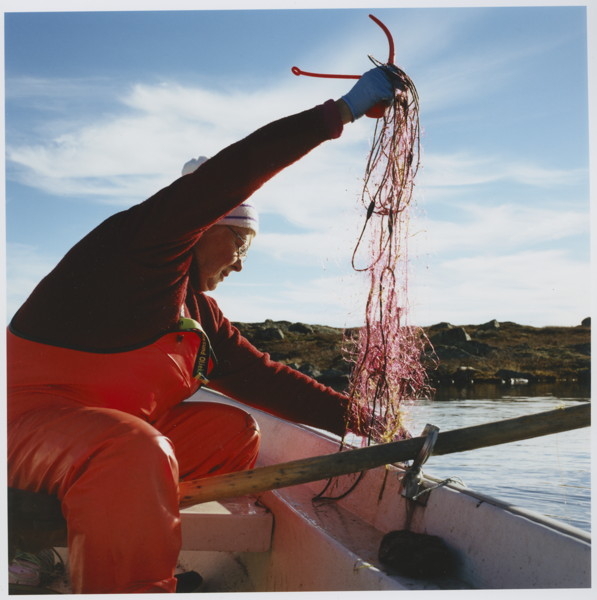
Helga nøster garn, C-print, 2013
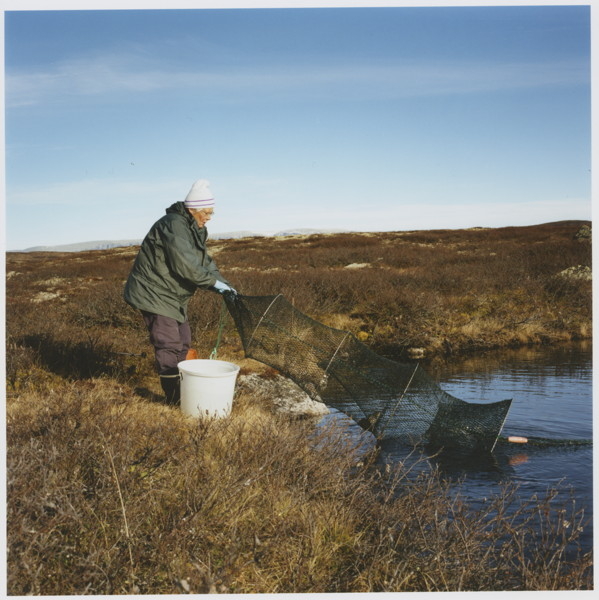
Grønenuten, C-print, 2013
Svalbard, 2012
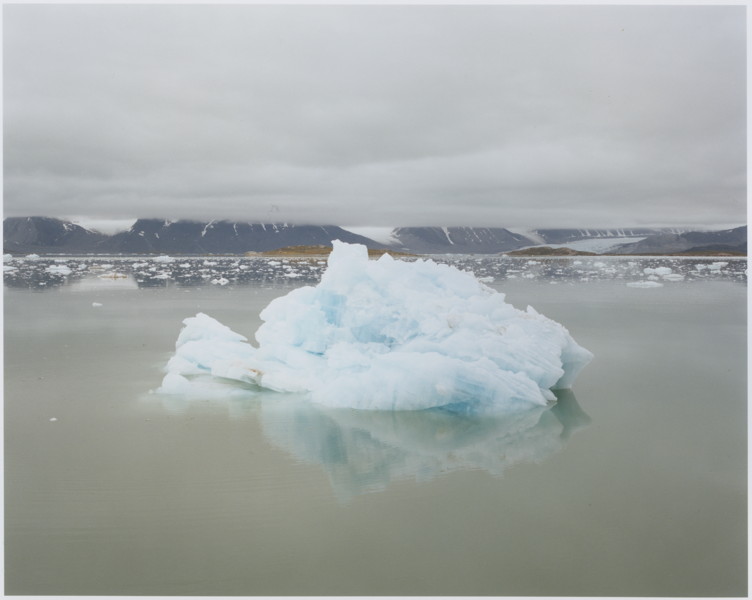


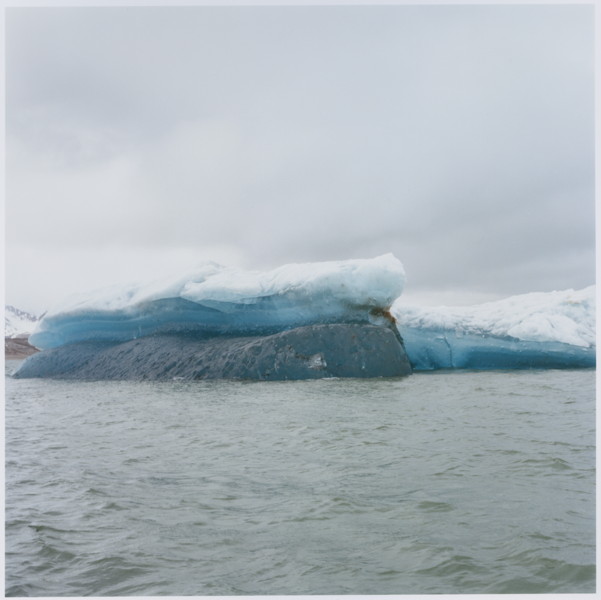
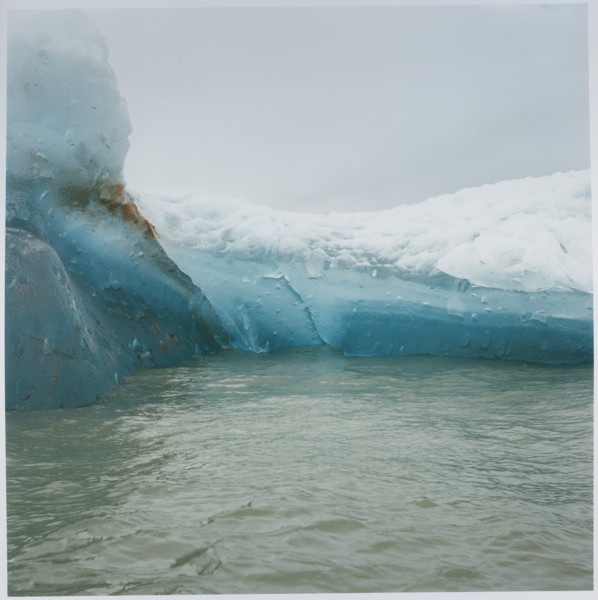




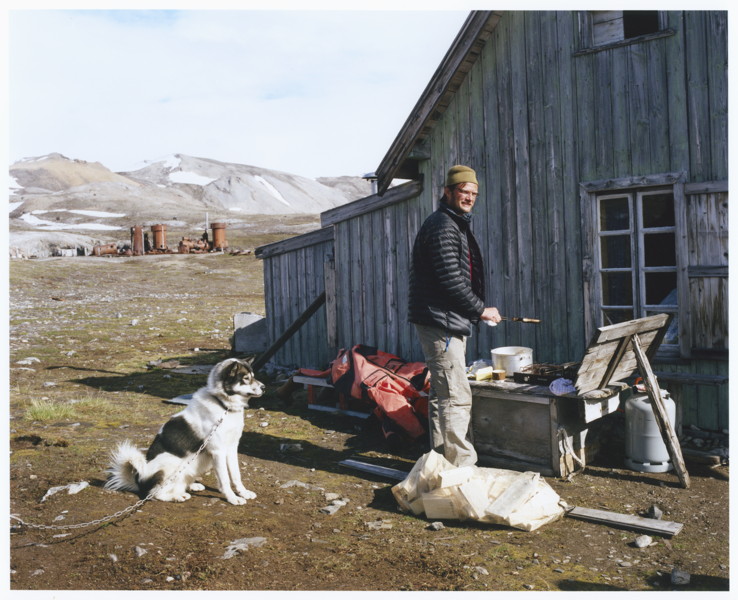
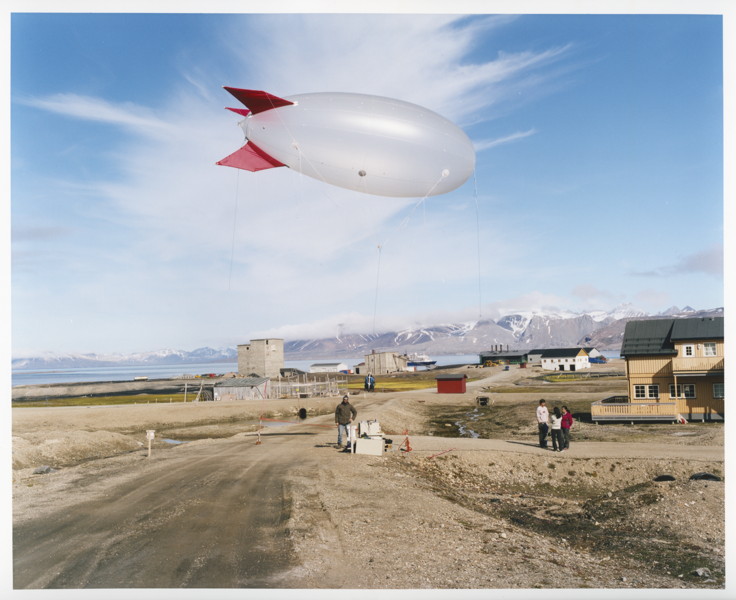
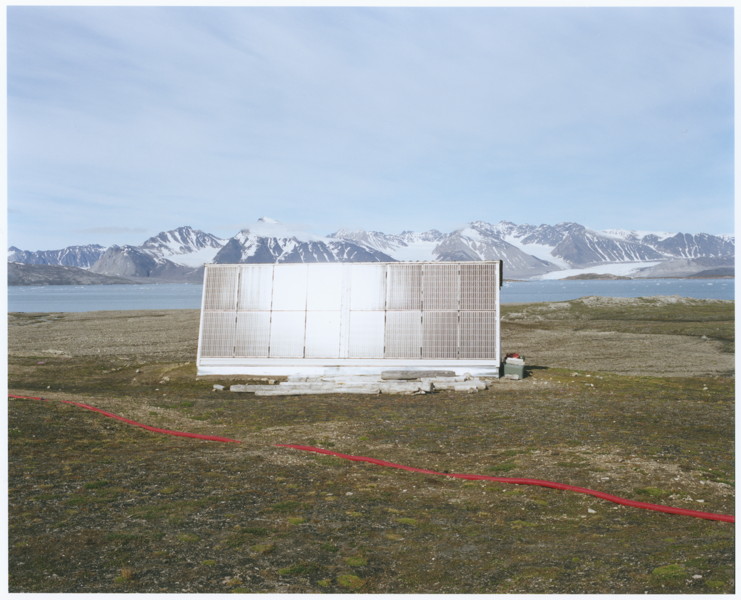
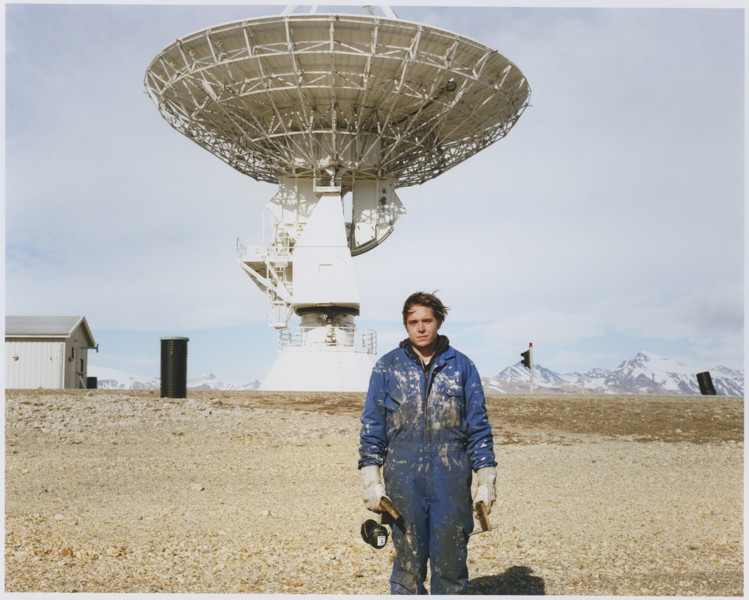


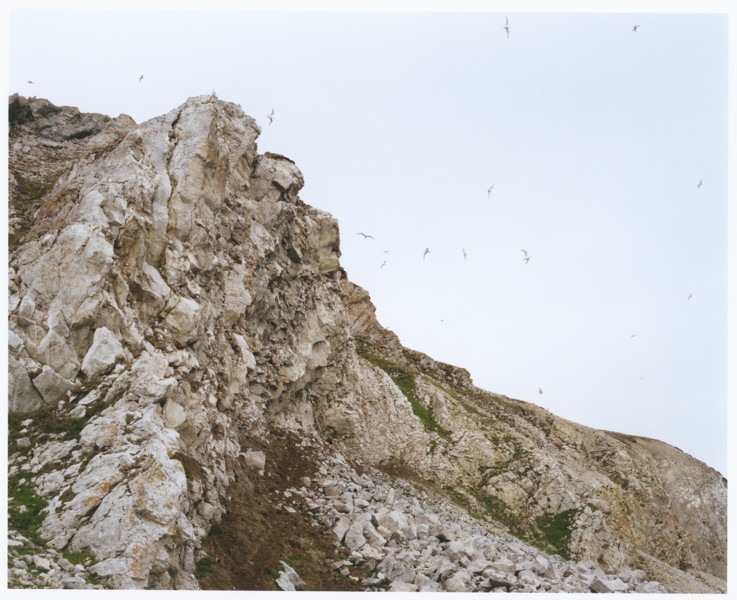
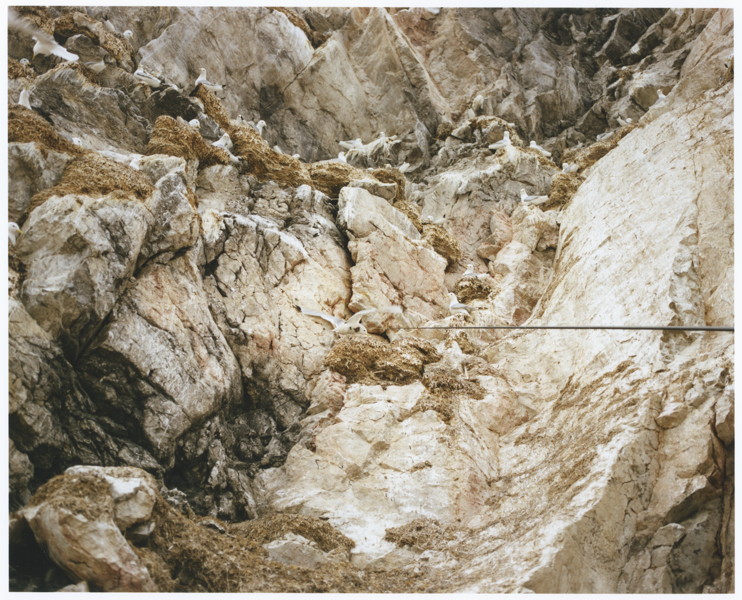
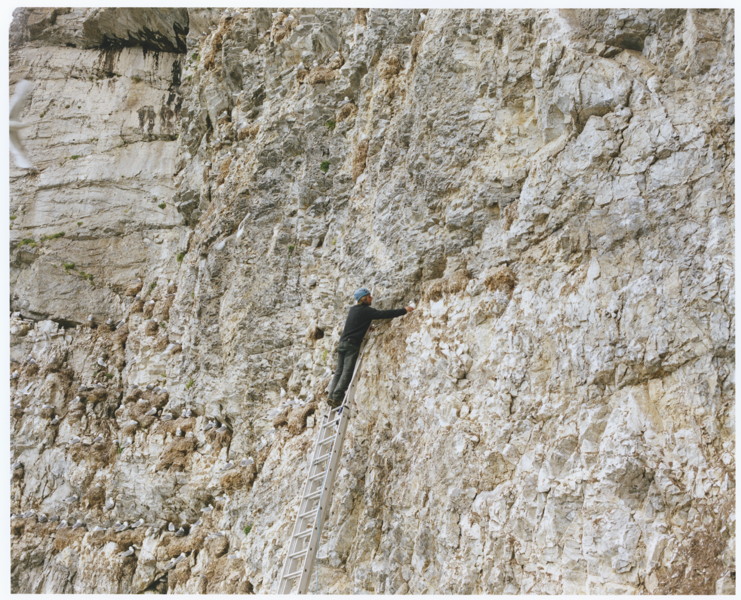
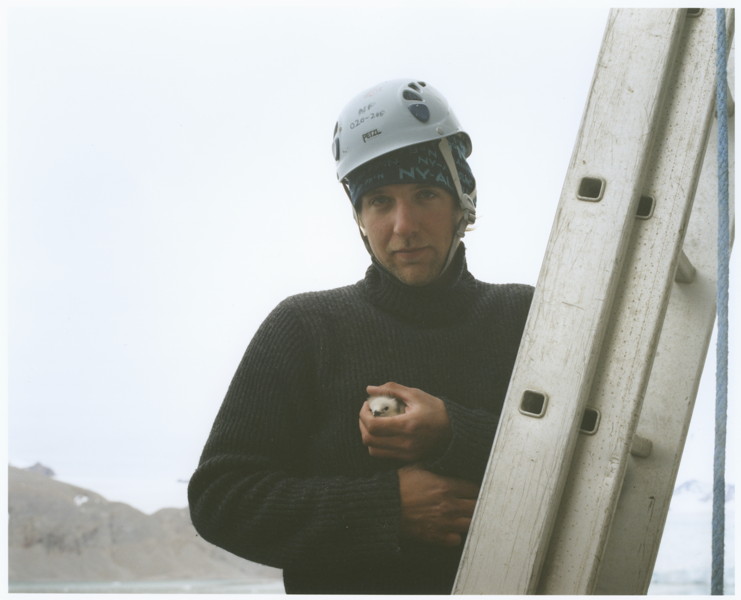
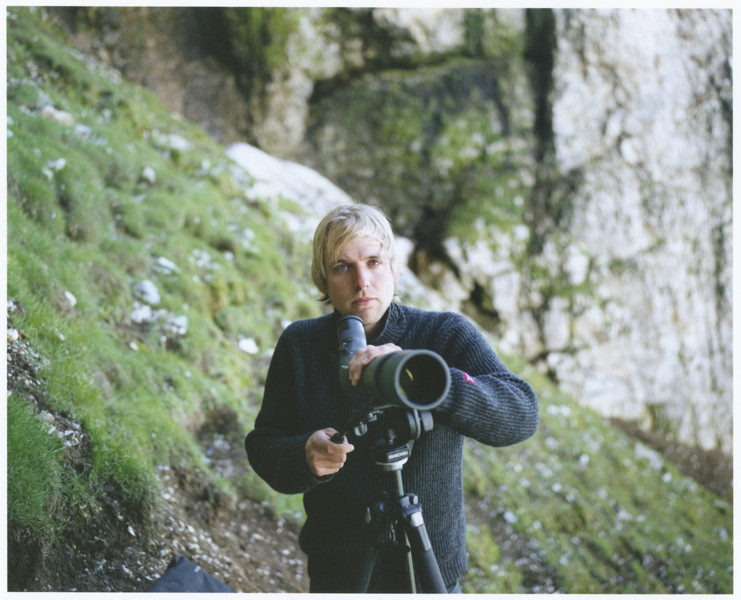


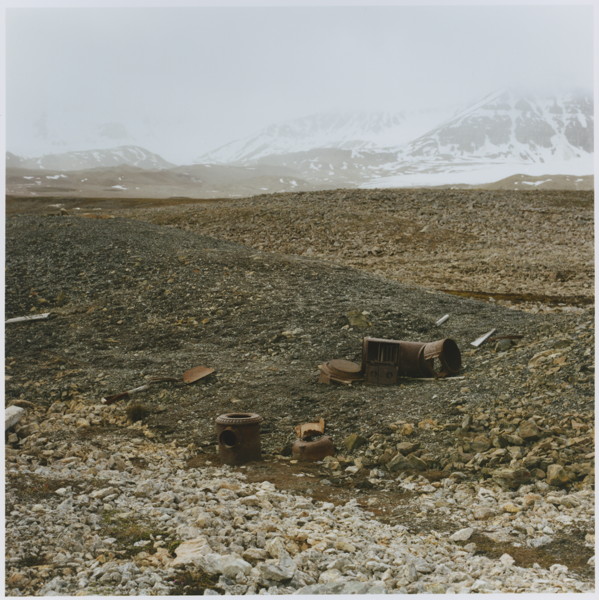


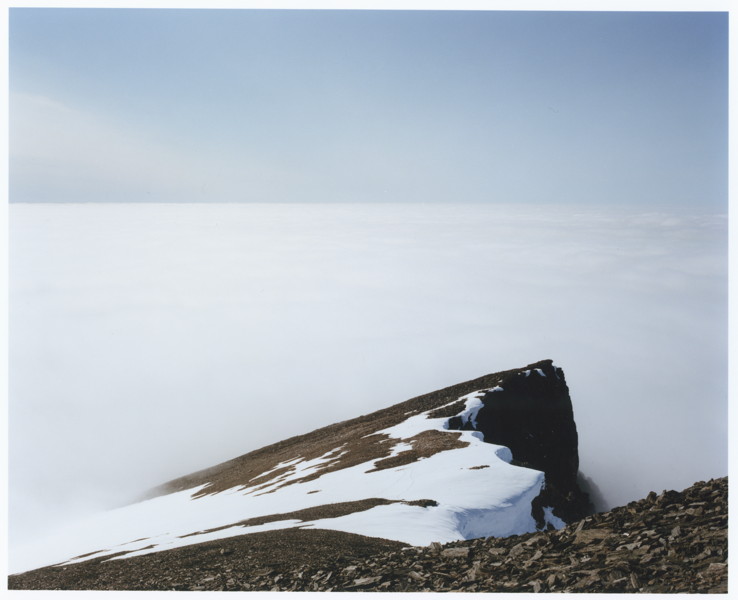
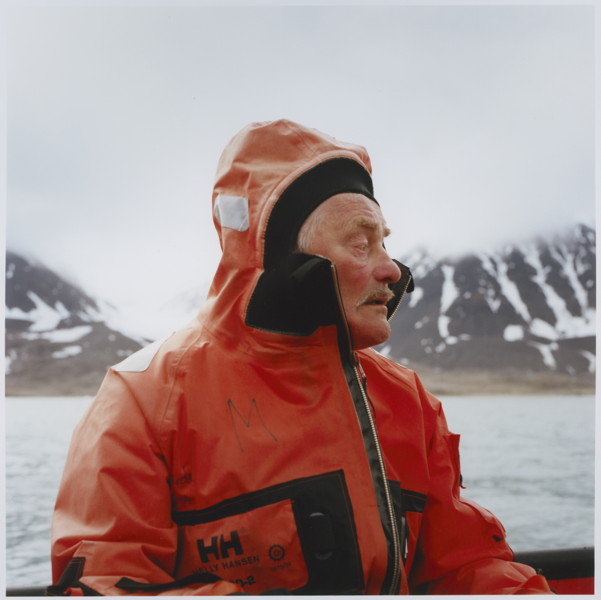

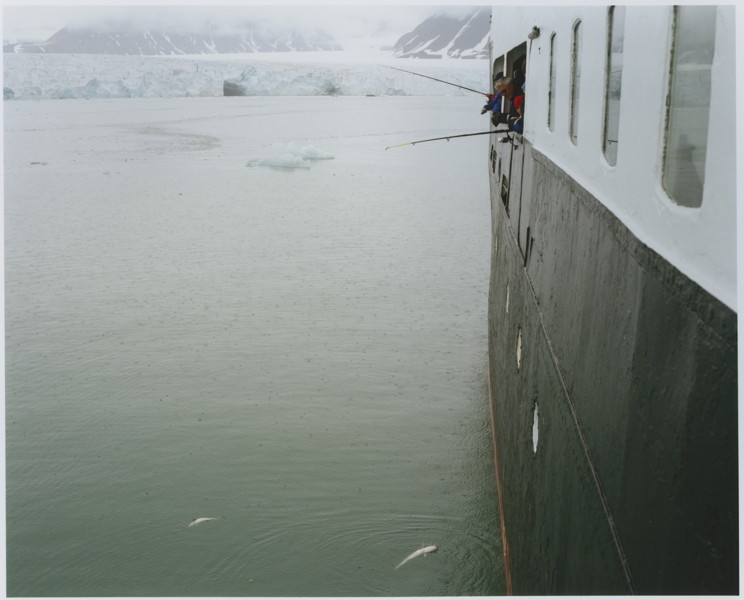
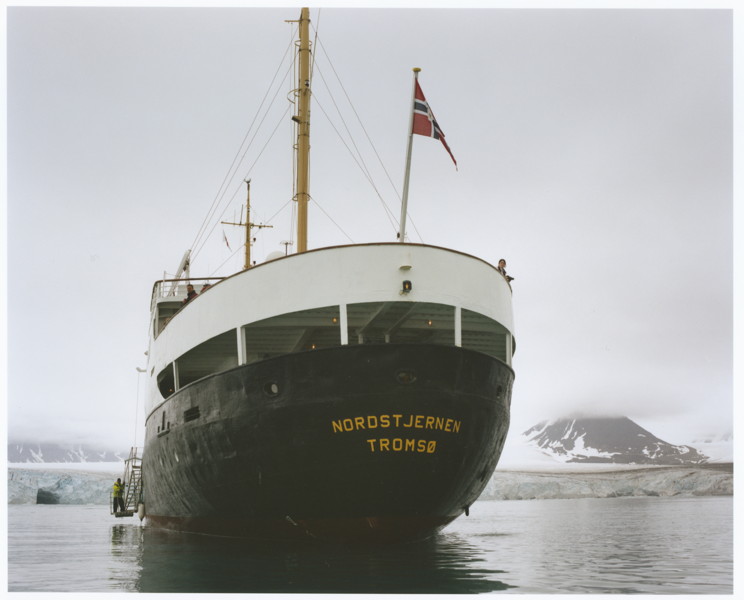
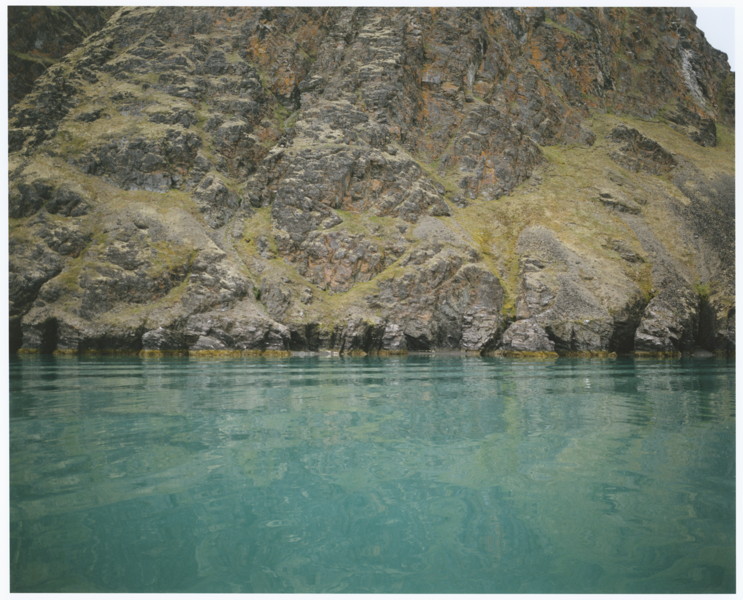
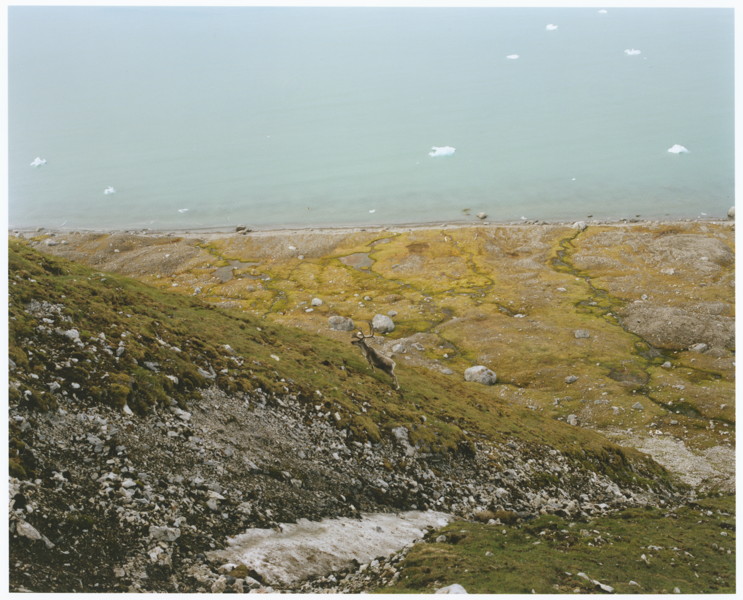
Goto Fukue, 2008
In March – April 2008 I went to an island callled Goto – Fukue, which is the biggest island and a part of the Goto Retto island chain in the East – China Sea and part of Nagasaki prefecture in Kyushu. When photographing there, I am trying to provide a window into worlds unknown to most people. For the window that my photographs provide to be authentic and meaningful, I need to spend time in these places and get to know them for myself. The places reveal themselves only as I explore them myself - physically, visually and spiritually. Only then I can communicate my very personal sense of a place through photographs. On the beach at low tide called Sansan Tomie, I met elderly women picking seaweed. Among many different types of seaweed, they mostly picked aosa and wakame. At full moon the tide is at its lowest and the ocean floor reveals its beauty, the seaweed in acid green and brown colours among black lava stones. The women worked at high speed, using the short time before the water level started to rise again. It was an aesthetic experience to be exactly there, standing on the ocean floor while observing a craft in execution. And I shot with all my concentration, knowing it would take another while before the next period of the highest possible distance between high and low tide would occur and the opportunity to see the women spread out like dots on a carpet of seaweed and stones again. The colours, the smell and the neatness of the work was quintessentially Japanese, as I had imagined it.
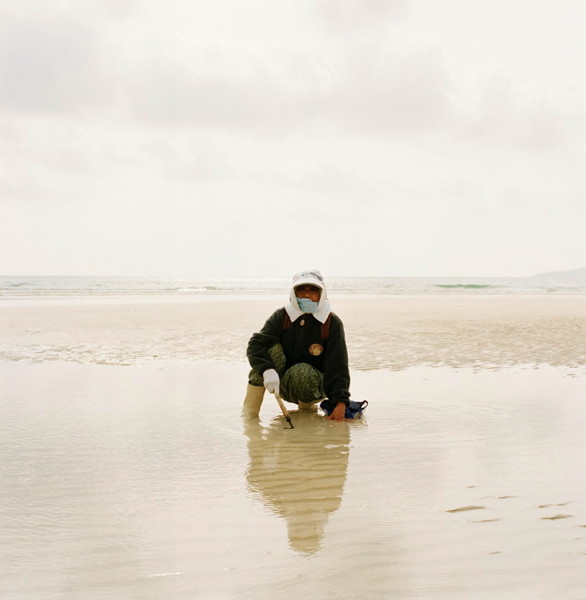
Goto Fukue # 1 C-print, 2008
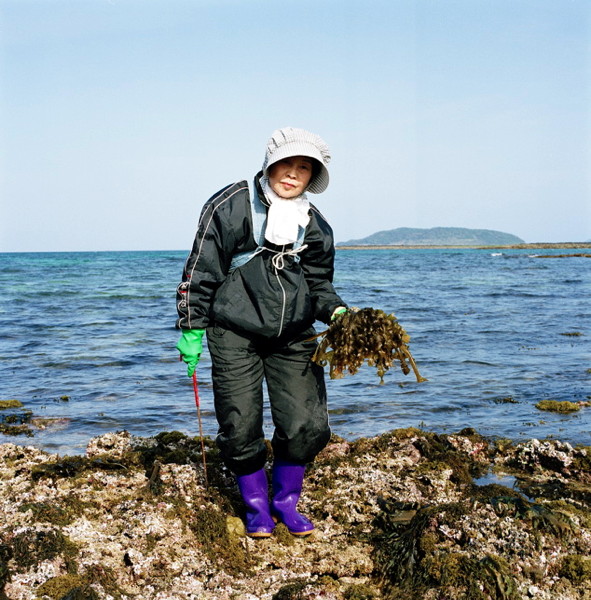
Goto Fukue # 11 C-print, 2008, 60 x 60 cm
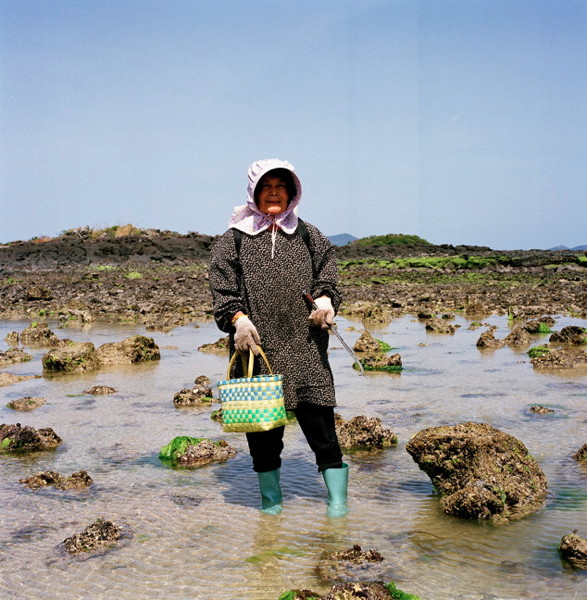
Goto Fukue # 17 C-print, 2008, 60 x 60 cm
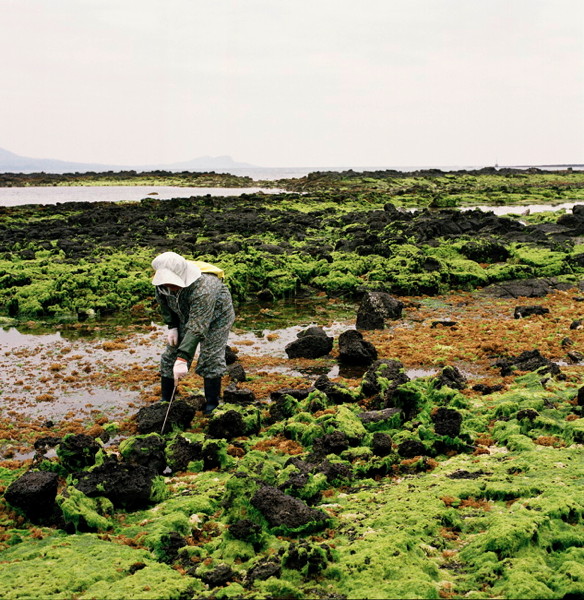
Goto Fukue # 23 C-print, 2008, 60 x 60 cm
Rena 006, 2006
RENA 006 is a series of portraits and landscapes from Rena Leir in Østerdalen, Norway. The camp is the most modern in Europe in terms of architecture and technology. My goal was to get on the inside of the system, to communicate with the human being behind the mask, the person protected by the uniform. The people portrayed are a selected group elite soldiers from The Norwegian Army Special Operations Commando with competence on the highest level within special operations and anti-terror operations. I was admitted into a closed system that very few have access to and where photography is normally strictly prohibited. The soldiers are masked and photographed in uniforms individualized and customized to the different combat situations they are entering; uniforms which almost appear as extensions of their own bodies. It is precisely the relation between what we extract from their politically loaded surface and the subjective content behind which create the tension in this project.
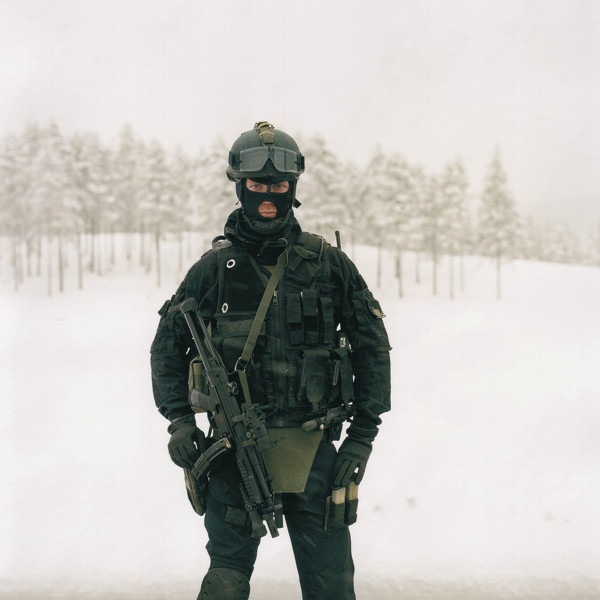
Rena 10, C-print, 2006, 110 x 110 cm
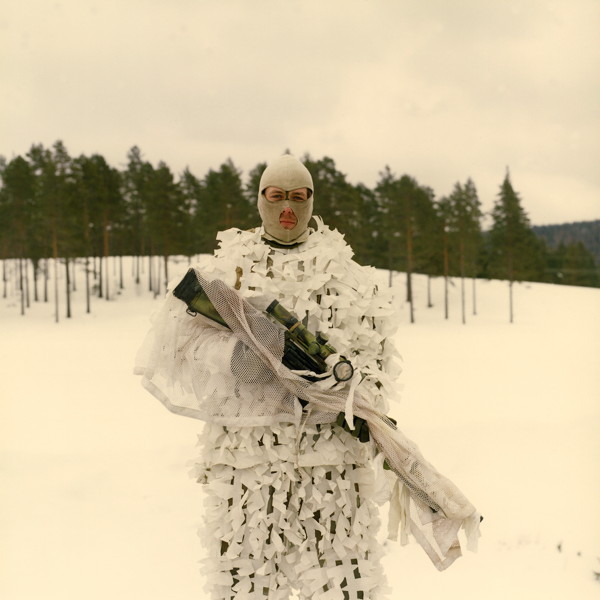
Rena 16, C-print, 2006, 110 x 110 cm
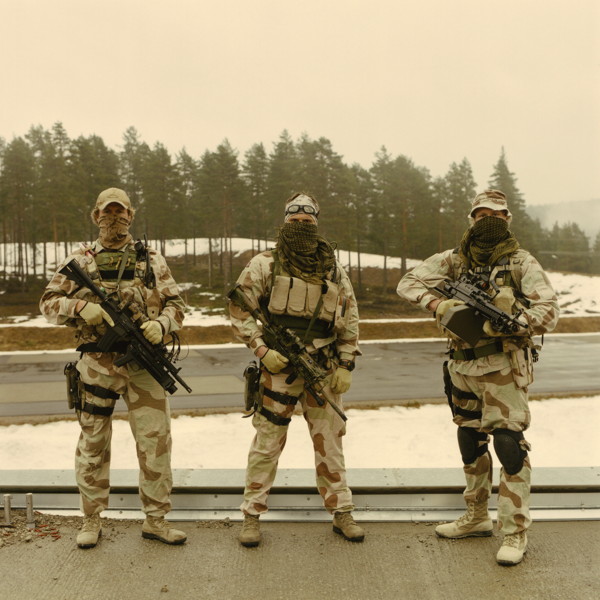
Rena 22, C-print, 2006, 136 x 136 cm
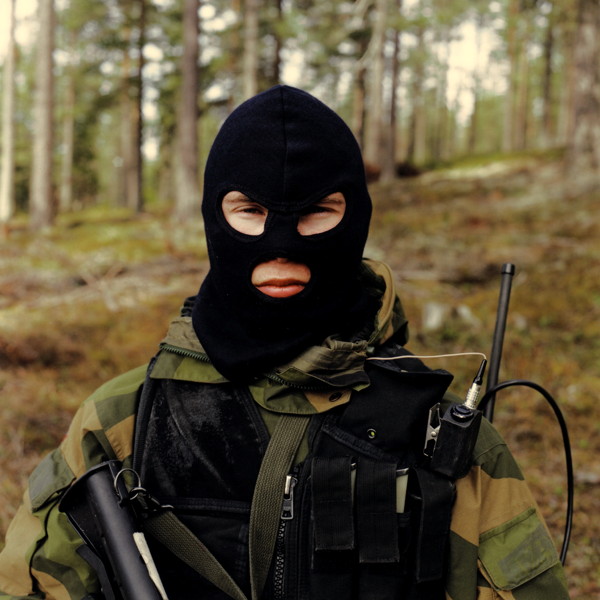
Rena 27, C-print, 2006, 40 x 40 cm
Mongolia, 2004
Mongolia is a series of portraits of the Mongolian nomads and their houses, the ger, also called a jurte. The portraits are taken either outdoors, in the dry, monochromatic landscape, or indoors, displaying the colourful interior of the ger, which stands in a stark contrast to the landscape outside. For about 3000 years the form and the function of the ger has remained unchanged. In the series of portraits of the ger itself I was interested in how the individual characteristics of the ger was made visible through the changing daylight and how it was placed in the landscape.
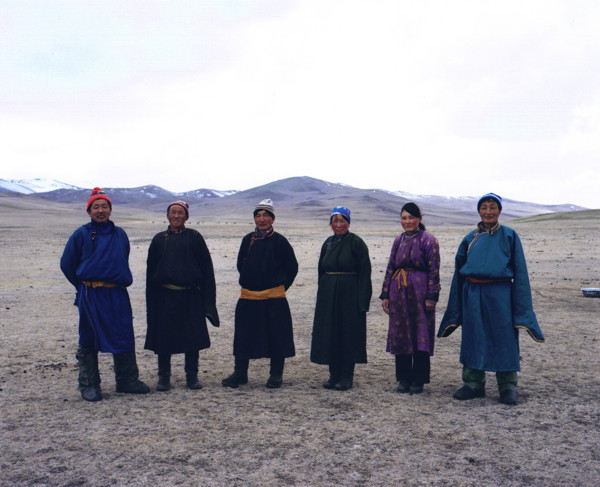
MN 001 Family Purew, Otschir and Luwsansharaw, 2004, C-print, 125 x 152 cm
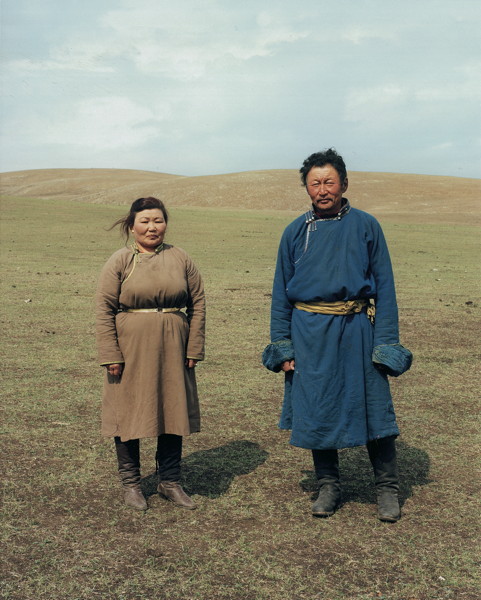
MN 007 Adja and Tschuluun, 2004, C-print, 60,1 x 75,9 cm
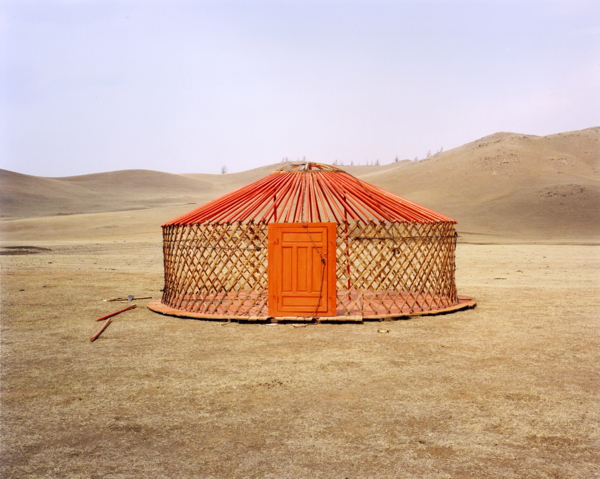
MN 050 Ger, 2004, C-print, 68 x 85 cm
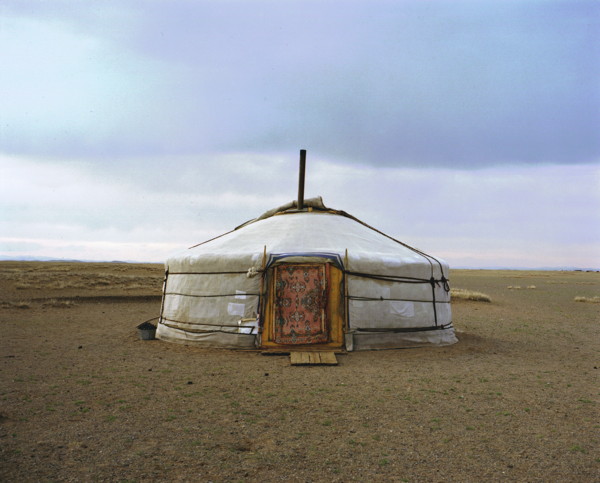
MN 054 Ger, 2004, C-print, 68 x 85 cm
Portraits and Architecture, 2002-
In this ongoing series I have concentrated on making portraits of people in architectural spaces. My particular interest in modern architecture was revitalized the year I lived in Paris to functionalist - socialist architecure in Berlin. I usually find places of particular interest in my local environment. The place functions as a stage for the person portrayed and that gives the portraits a special meaning, a context. I am interested in how artists in earlier times and their ideas about space, spatial solutions and its proportions relate to the contemporary human being? Are these idealistic architectural spaces valid today, 50 - 80 years later? I am investigating the meaning of these architecural spaces and the dialogue that exists in the interplay between the human being and the architectural space.
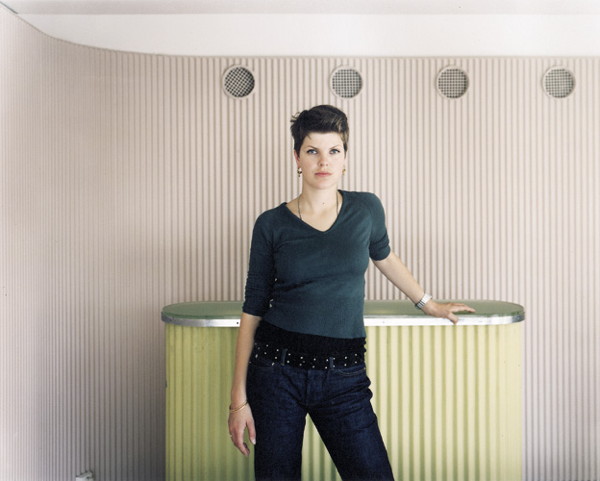
Eline, Villa Stenersen, 2002, C-print, 149 x 191 cm
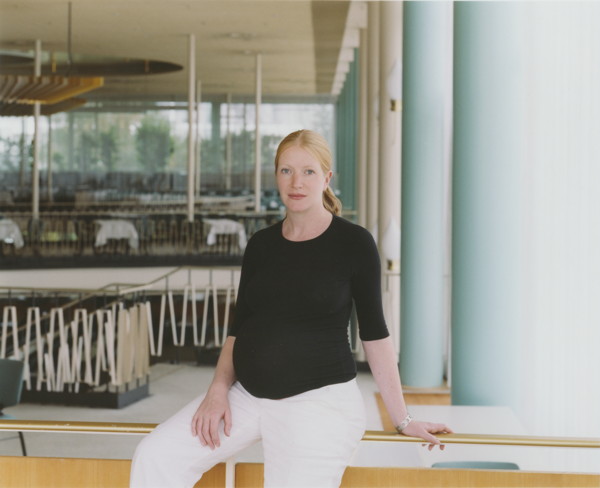
Kirsty, Palais am Funkturm, 2003, C-print, 149 x 191 cm
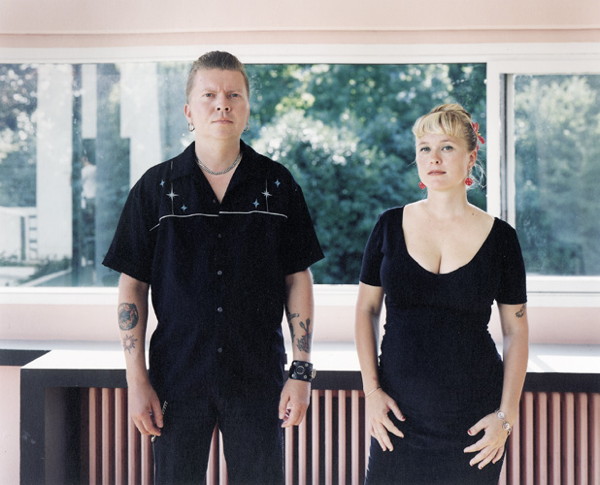
Svein and Elise, Villa Savoie, 2002, C-print, 149 x 191 cm
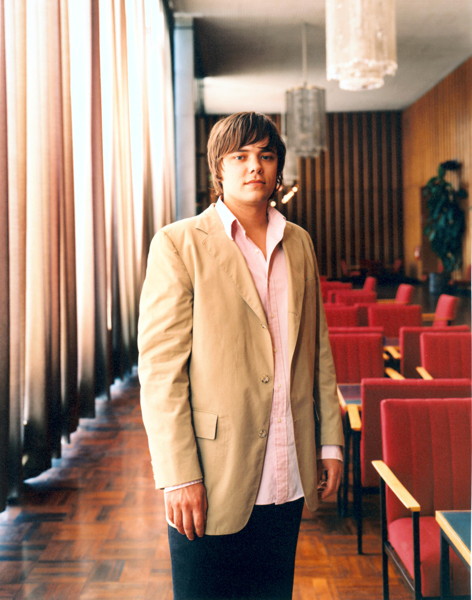
Matthew, Kino International Berlin, 2000, C-print, 149 x 191 cm
New Portraits, 2000-2002
New Portraits is a series of portraits of people in landscapes and cityscapes. The people presented are from my own milieu. The serial form allows the viewer an insight into the relations among the subjects, to each other and to themselves. Reading my portraits over time is like reading a story, a slowly evolving temporal encounter with a group of individuals. In my direct, confrontational, yet subtle approach to the subjects, the photographic encounter itself comes to the foreground. It is crucial to capture the atmosphere in which a meeting has taken place between the photographer and the subjects, the interaction between them is openly exposed. In the frontality and directness of my portraits lies an invitation for the viewer to take part. It is an exchange, looking and being looked at. I relate as much to August Sander and the neo-objectivist tradition as to a contemporary scene concerned with close reality and subjective experiences.
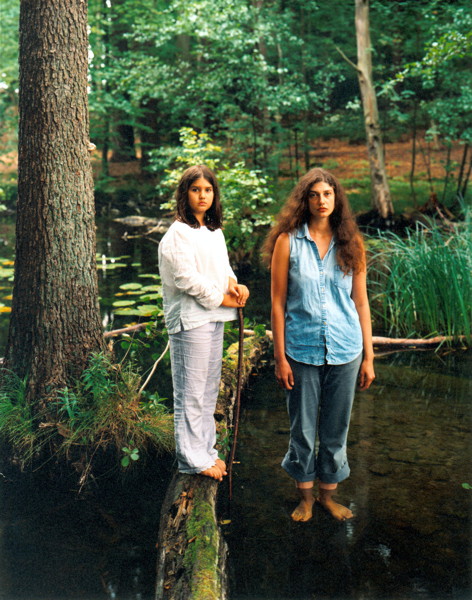
Anastasia and Nina, Zermützel, 2001, C-print, 141 x 111 cm
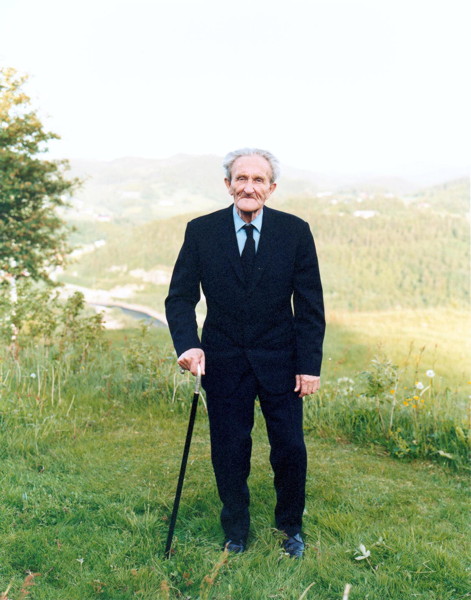
Peder, Svorkmo, 2000, C-print, 141 x 111 cm
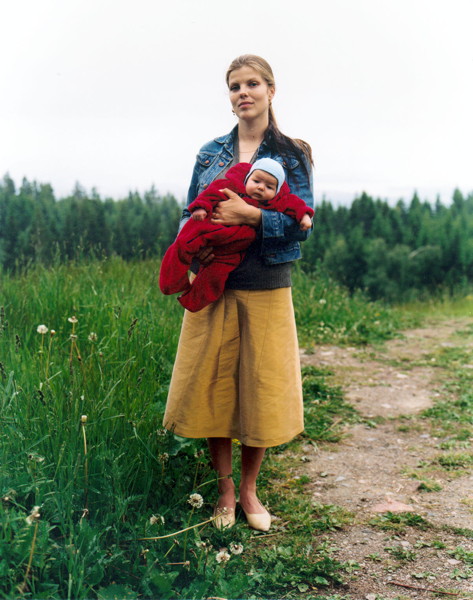
Eline and Ella, Holmenkollen, 2000, C-print, 141 x 111 cm
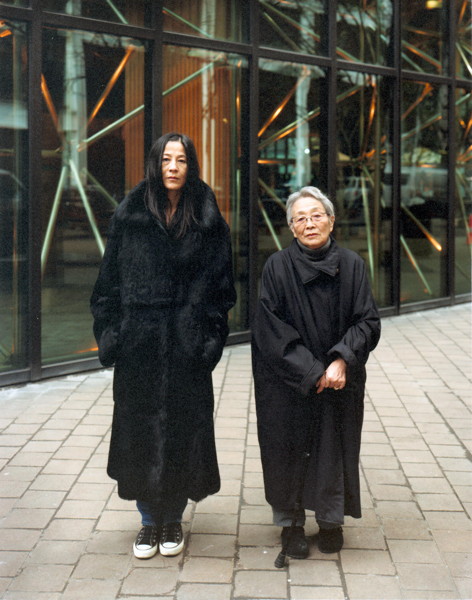
Stella and Katsue, Maiden Lane, 2001, C-print, 141 x 111 cm
Isortoq Unartoq, 1999
Isortoq Unartoq is a series of images from my two trips to Greenland, summer 1998 and 1999, where I spent ten weeks traversing the dramatic arctic landscape. I travelled mostly alone, camping beside the natural hot springs of the island of Unartoq in the south of the country and visiting the reindeer station of Isortoq at the foot of the inland ice. In my attempt to approach a totally unknown culture, an originally nomadic people with a rich history of norse settlers, the land itself was necessarily portrayed along with its inhabitants. I was interested in how location is reflected in culture, which is particularly evident in this series. The photograph conveys the relationship with the world that each person bears inside themself. In the manner a pose is assumed or not, there is social meaning, custom. Examining the photographic image as a method of documentation, reference and portrayal, these portraits represent a particular presence within a singular terrain. The exotic becomes near and intimate whilst the familiar seems abstract, strange, faraway, creating a sense of both participation and alienation.
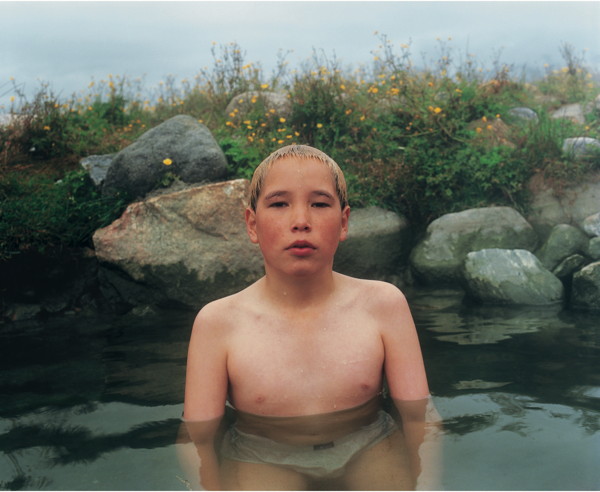
Isortoq Unartoq # 6, 1999, C-print, 73,7 x 89,9 cm
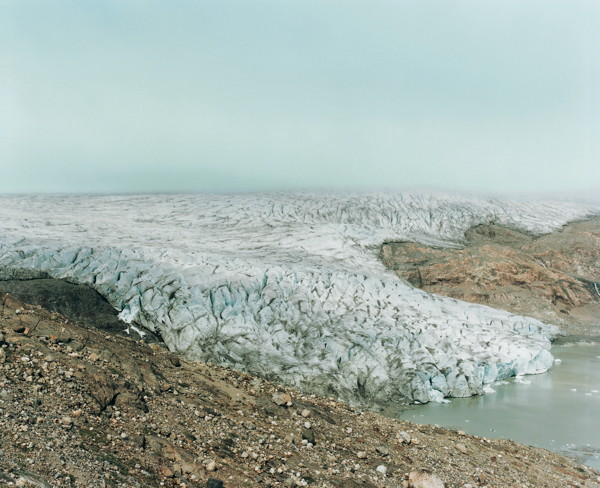
Isortoq Unartoq # 11, 1999, C-print, 73,7 x 89,9 cm
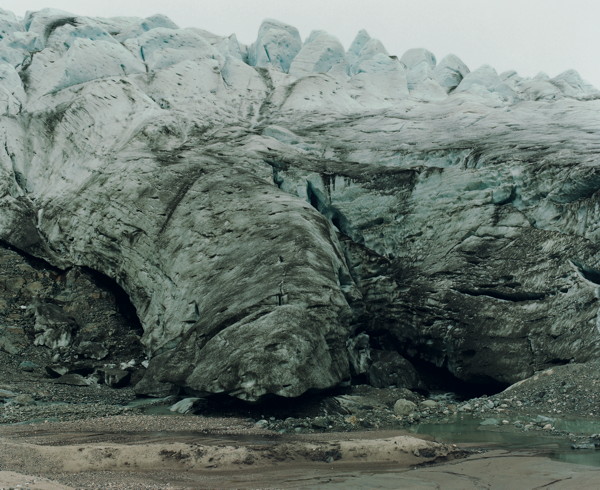
Isortoq Unartoq # 12, 1999, C-print, 73,7 x 89,9 cm
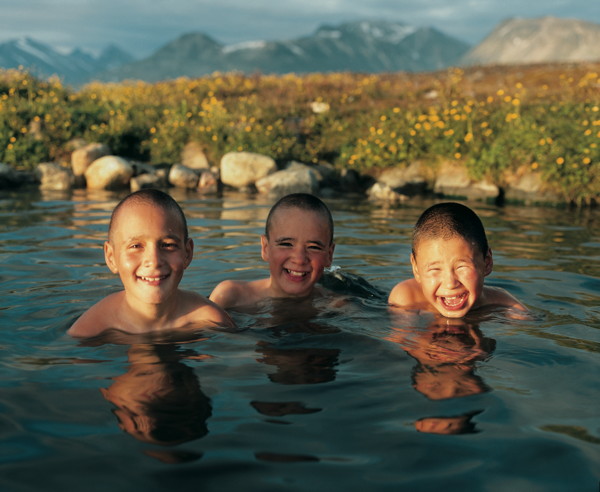
Isortoq Unartoq # 19, 1999, C-print, 73,7 x 89,9 cm
Double Portraits, 1998
The Double Portraits series consists of double portraits of single subjects. From the circa 40 frames shot during a half hour session, I select two that reveal minimal differences in the pose and presence of the subjects, but subtle and nonetheless striking changes in their mood and countenance. These photographs are taken using a neutral background and natural light, the changes in which contribute to the changing temperature of each picture. The two pictures, like two frames of the same film shot, gain a cinematic quality. The decisive moment dissolves. (ref. Henri Cartier Bresson). The subjects have moved very slightly, but their thoughts have shifted elsewhere.
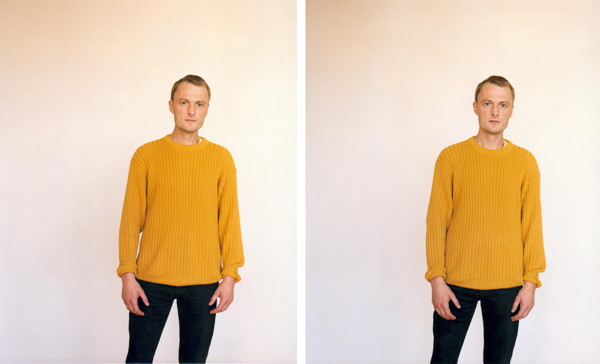
Guttorm I & II, 1998, C-Print, Diasec Face Sandwich, 2 parts, each 156 x 128 cm
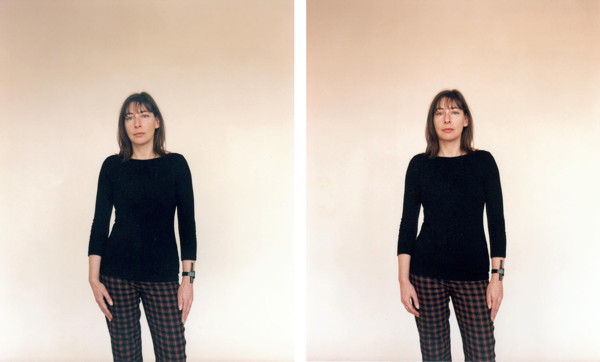
Janice I & II, 1998, C-Print, Diasec Face Sandwich, 2 parts, each 156 x 128 cm
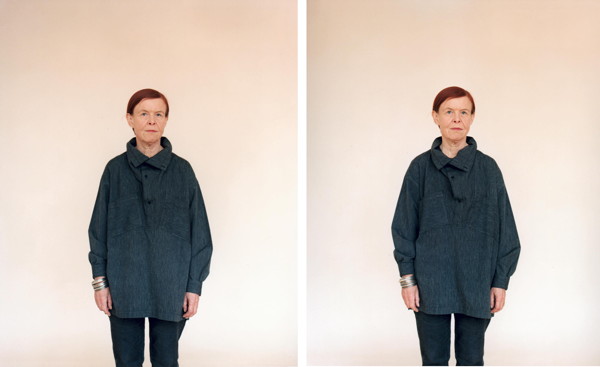
Anne Birgitte I & II, 1998, C-Print, Diasec Face Sandwich, 2 parts, each 156 x 128 cm
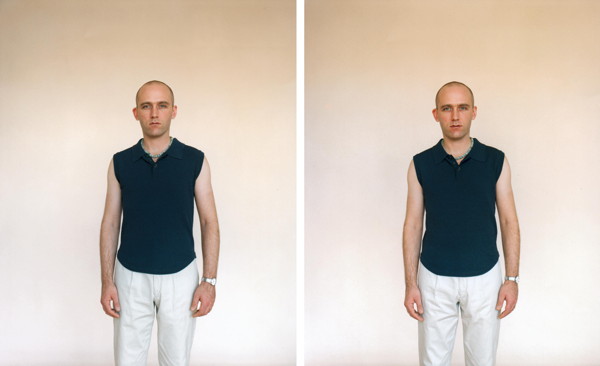
Einar I & II, 1998, C-Print, Diasec Face Sandwich, 2 parts, each 156 x 128 cm
Couples, 1996
In the Couples series my interest turned to the way in which people in a relationship, real life couples and often once again a mixture of nationals and newcomers, interact whilst being photographed. Continuing to use a monochrome background and eliminating all shadows, I removed the full scale figures from any particular setting or place and emphasized the space between them as much as the idiosyncracies of their attire and grooming. The life size scale of the photographs brings the viewer close to the actual experience of the photographic event and brings the physical experience of the subjects into the exhibition space.
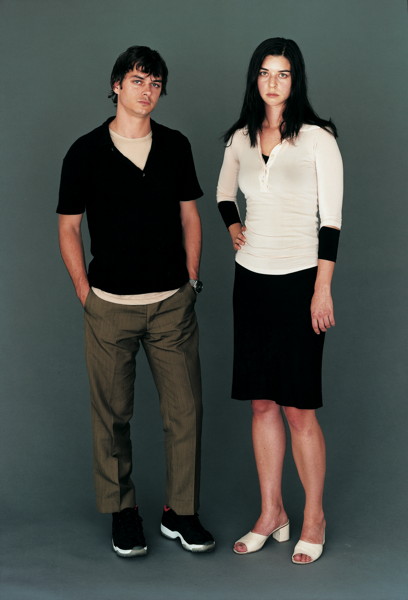
Antonio Rafael Balzano, Tone E. Ch. Johansen, 1996, C-Print, 220 x 145 cm
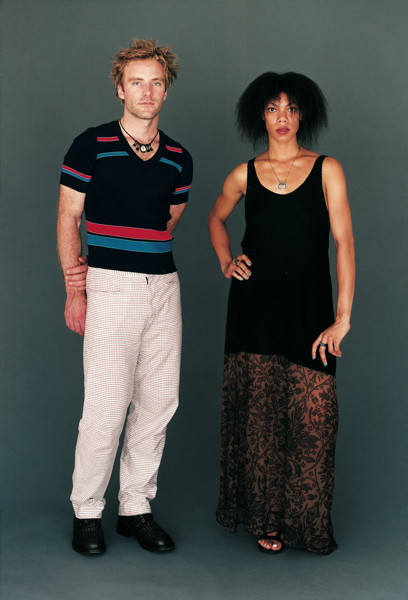
Knut Åsdam, Camille Norment, 1996, C-Print, 220 x 145 cm
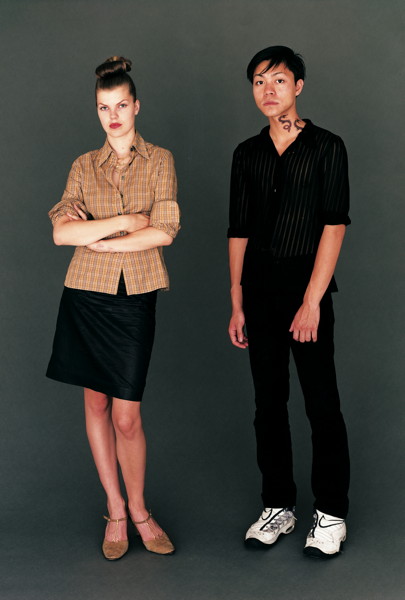
Eline Mugaas, John Minh Nguyen, 1996, C-Print, 220 x 145 cm
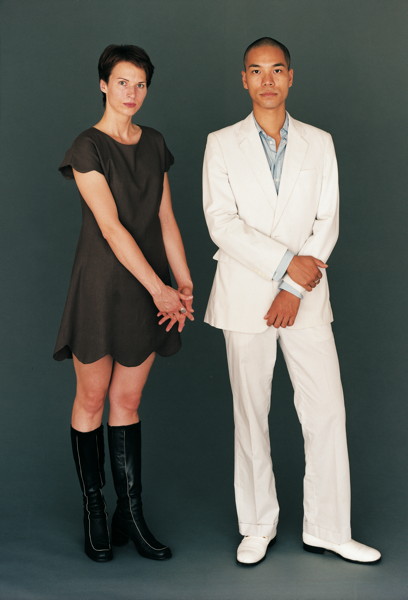
Carol Shadford, Christian Noel Nguyen, 1996, C-Print, 220 x 145 cm
AGE Women 25-90, 1994
An early body of work from 1994 portrayed two groups of women: the first a young, ethnically and nationally diverse group of women living in New York City; the second elderly women from Svorkmo, Orkdal, a small village in Norway. The photographs attempted to read the psychological, cultural, experiential and generational differences of these women.
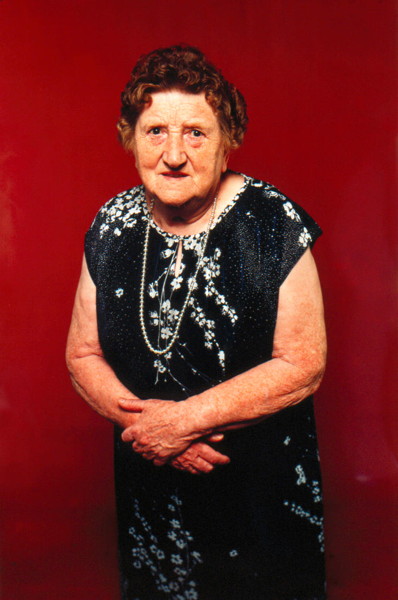
Marit Stene, 1994, C-Print, 110 x 75 cm
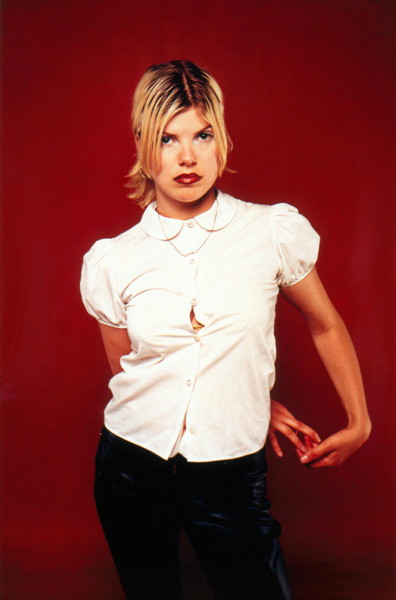
Eline Mugaas, 1994, C-Print, 110 x 75 cm
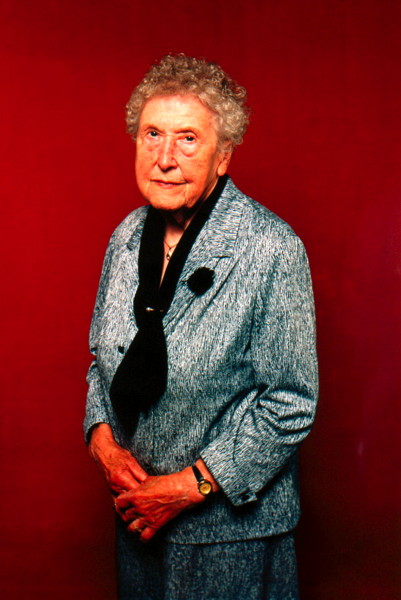
Anne Berbu, 1994, C-print, 110 x 75 cm
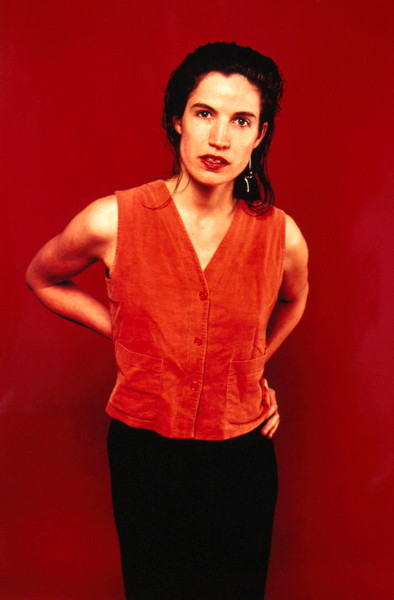
Gro Bonesmo, 1994, C-Print, 110 x 75 cm
Men in Underwear, 1992
My interest to work with colour photography is that it transmits reality in a direct and unartificial manner. In my portraits I am not searching for interesting-looking people, but interesting meetings with people. Spending time with friends and strangers, situations occur that are of special interest to me and give a particular tension to my photographs. That tension creates a portrait of my relationship to that person rather than an objective description or document of that person's face.
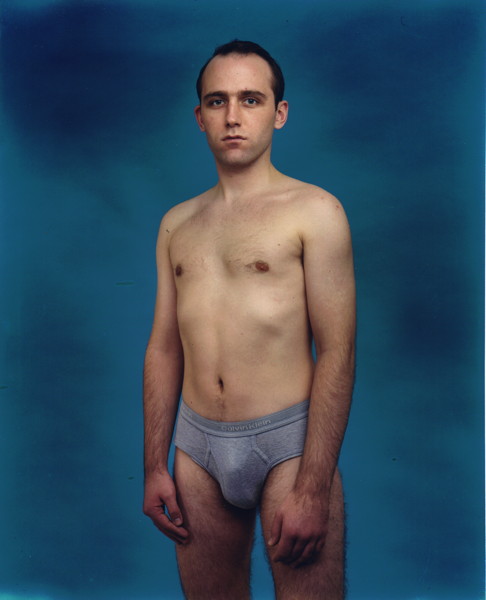
Einar Holiløkk, 1992, C-print, 101 x 76 cm
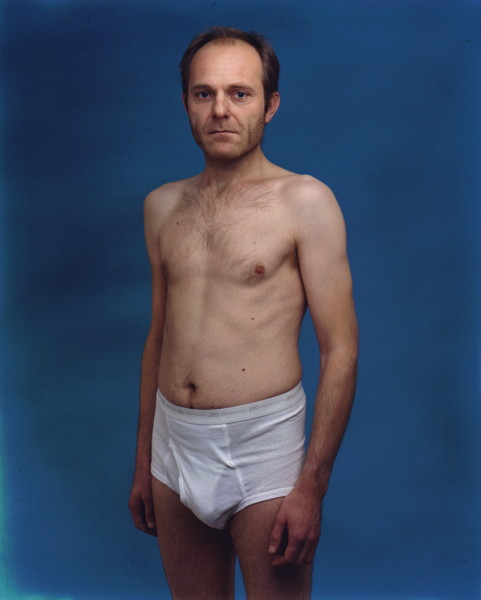
Even Bie- Larsen, 1992, C-print, 101 x 76 cm
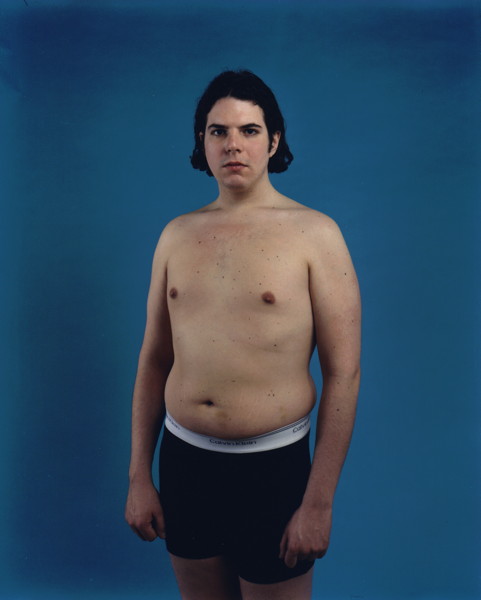
Chris Pell Lombardi, 1992, C-print, 101 x 76 cm